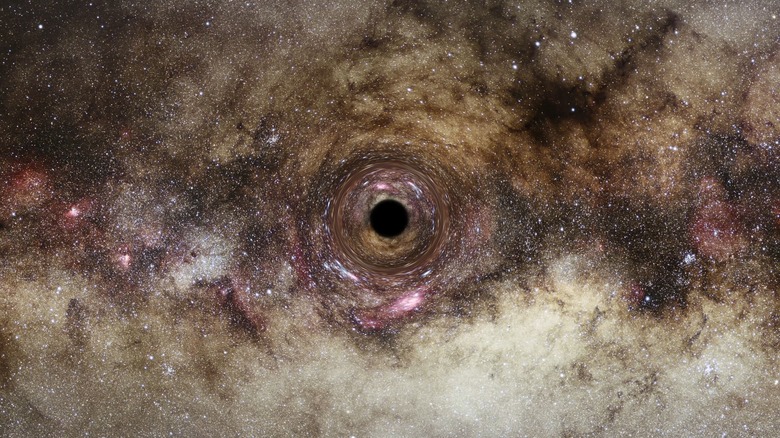Astronomers Just Found One Of The Biggest Black Holes Of All Time
Black holes don't just come in one size. They range from a few times the mass of the sun to enormous beasts at the center of galaxies called supermassive black holes, which can be millions of times the mass of the sun. Recently, astronomers discovered a record-breaking black hole which is thought to be one of the biggest ever found.
In a paper published in the journal Monthly Notices of the Royal Astronomical Society astronomers from Durham University in the U.K. describe a black hole over 30 billion times the mass of the sun. Discovering it required the use of a supercomputer and the Hubble Space Telescope, using a new method for identifying large masses through modeling.
The modeling used a supercomputer facility called DiRAC HPC, or Distributed Research using Advanced Computing – High Performance Computing, a specialized facility for modeling in astronomy and particle physics. By using the computing resources of the facility, the researchers were able to model how light bends around the enormous black hole.
"This particular black hole, which is roughly 30 billion times the mass of our Sun, is one of the biggest ever detected and on the upper limit of how large we believe black holes can theoretically become, so it is an extremely exciting discovery," said lead author of the paper, James Nightingale of Durham University, in a press release.
Discovered using gravitational lensing
Black holes can be tricky to detect because we can't actually see them directly. Black holes are so dense that anything that comes too close to them, even light, is pulled in by their gravity and can't escape if it passes a point called the event horizon. That means the black hole itself is dark — hence the name.
However, that doesn't mean black holes are invisible. In fact, the region just around the black hole can glow brightly. That's because gas and dust are drawn toward the black hole by gravity, and orbit around it before they pass the event horizon. As that dust and gas orbits, friction causes it to heat, which in turn makes it glow. This glowing shell of dust and gas is often visible even over great distances, which is how the first ever image of a black hole was captured.
To discover this new, enormous black hole though, the researchers relied on a particular phenomenon called gravitational lensing. This happens due to the tremendous gravity of massive, dense objects like black holes. The gravity they produce is so extreme that it actually warps space-time, causing light rays to bend.
The huge black hole was identified by looking at light from a distant galaxy which showed an arc, which is an indicator of gravitational lensing. The arc was first seen in 2004, but it wasn't until 18 years later that a supercomputer helped to model how massive the supermassive black hole must have been to cause that kind of lensing.
A new method for discovering black holes
By looking for this tell-tale arcing of light, researchers are able to identify black holes even if they aren't active. This method could be used for more discoveries in the future.
"Most of the biggest black holes that we know about are in an active state, where matter pulled in close to the black hole heats up and releases energy in the form of light, X-rays, and other radiation," Nightingale said.
"However, gravitational lensing makes it possible to study inactive black holes, something not currently possible in distant galaxies. This approach could let us detect many more black holes beyond our local universe and reveal how these exotic objects evolved further back in cosmic time."
